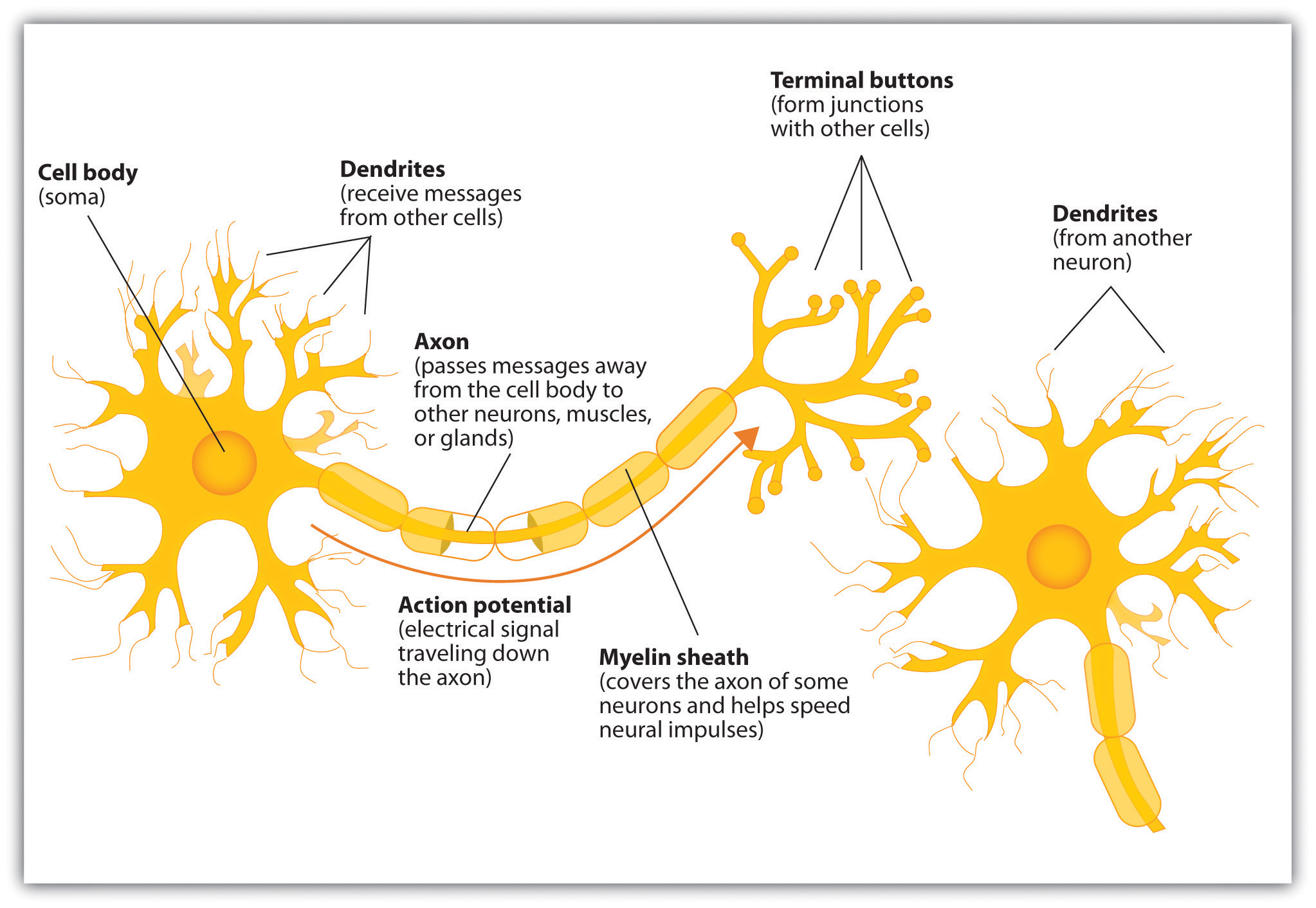Neuron Structure
there are 3 different types of neurons the motor neuron, sensory neuron, and the interneuron.

All neurons are made of dendrites which receive information from other neurons and transmit them to the cell body, the cell body also known as the soma that receives messages from the dendrites and provides life functions, and the axon which carries neurons away from the cell body and to other neurons and muscles.
The motor neuron contains the 3 parts previously listed and the terminal buttons which are responsible for sending signals on to other neurons, the myelin sheath that converse the axon of some neurons and helps speed up neural impulse, and the action potential which is the signal that travels down the axon.

Neuron Functions
A neuron is a electrically excitable cells that transmits information through electrical and chemical signals, they are the fundamental units of the brain and nervous system. Impulses that are sent along the neuron are called action potential, the action potential is the electrical current that travels along the axon when a neuron has been stimulated. The key to neural function is the synaptic signaling process, it is partly electrical and partly chemical. Once the electrical signal reaches the synapse, a neurotransmitter is released by the neuron. This neurotransmitter will stimulate the second neuron, triggering a new wave of electrical impulse, repeating the same mechanism described above.
Synapse Structure

Synapse Function
The synapse is the point of communication between 2 neurons or a neuron and target cell, like a muscle or gland. At the synapse, the firing of an action potential in one neuron (the presynaptic) causes the transmission of a signal to another neuron (the postsynaptic) making the postsynaptic neuron either more or less likely to fire its own action potential.
When the action potential reaches the axon terminal the AP causes synaptic vesicles to release neurotransmitters into the synaptic gap, the neurotransmitters diffuse through the gap and bind to the receptors on the receiving end.
Citations:
Google Search, Google, www.google.ca/search?rlz=1C1CHBH_enCA764CA764&biw=1368&bih=802&tbm=isch&sa=1&ei=etDEW5K2B_Lg9AP4_oC4BQ&q=neuron structure and function&oq=neuron structure &gs_l=img.1.0.0l10.715337.718744.0.721048.20.14.1.5.5.0.92.863.14.14.0….0…1c.1.64.img..0.20.894…0i67k1j0i10i24k1.0.TOVypLAdWIE#imgrc=7qpNMbGpJOE30M:
“The Synapse.” Khan Academy, Khan Academy, www.khanacademy.org/science/biology/human-biology/neuron-nervous-system/a/the-synapse.
“Synapse Structure.” Google Search, Google, www.google.ca/search?q=synapse structure&rlz=1C1CHBH_enCA764CA764&source=lnms&tbm=isch&sa=X&ved=0ahUKEwjU6JTPhYneAhUxGzQIHdPnAL4Q_AUIDigB&biw=1368&bih=802#imgrc=0kLOauxXVNelqM:

